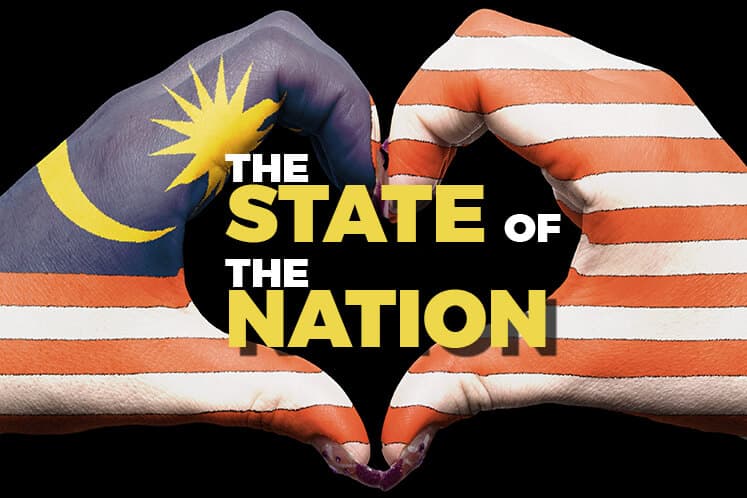
This article first appeared in The Edge Malaysia Weekly on April 20, 2020 - April 26, 2020
THE extended oil conundrum is not good news for Malaysia, which has to follow the tempo of the bigger oil majors and participate in deeper production cuts to stop the price free-fall. And the Covid-19 demand shock is also emerging in the liquefied natural gas (LNG) market, with long-term gas off-takers beginning to pause their purchases.
To support oil prices, Malaysia has agreed to cut production by 136,000 barrels per day (bpd) as part of the 9.7 million bpd supply cut by Opec+. The Organisation of the Petroleum Exporting Countries is using October 2018 numbers as the baseline. On that note, Malaysia’s cut is about 20% of its estimated 2018 production of slightly above 680,000 bpd.
This may upset Petroliam Nasional Bhd’s plan to increase its oil and gas output by 5% this year. Asked to comment, Petronas tells The Edge, “Petronas would like to reaffirm our commitment in supporting Malaysia’s efforts towards a more stable global oil market in close collaboration and cooperation with Opec and other non-Opec participating economies.”
On the demand side, an LNG client in China initiated a force majeure in February to avoid offtake involving a long-term contract of some 3.03 tonnes per annum. At the time, the demand loss was offset by a similar take-up in South Korea. But Bloomberg reported last week that Korea Gas Corp is now in talks with Petronas and other suppliers to delay cargoes slated for delivery until October, quoting sources. Kogas takes up to two million tonnes per annum of LNG supply from Petronas, past reports show.
The two clients combined would affect roughly 19% of Malaysia’s LNG exports. Of course, the impact depends on the length of the Covid-19 global lockdown and the rate of recovery of business activities.
Almost all of Petronas’ LNG is sold in Asia-Pacific — in China, South Korea, Japan and Taiwan.
As demand shrinks temporarily, Petronas could either slow output or fight for market share elsewhere, which is difficult if producers like Qatar or Australia experience similar demand bottlenecks. It can store the excess gas but there is less storage space in Asia than in other continents.
Fitch Ratings said in a recent note that it expects Petronas’ LNG and downstream volumes to fall 5% to 8% in 2020 while upstream volumes will also fall before recovering next year to last year’s levels.
Up to RM31bil lost from slump at US$30/bbl
Last year, Malaysia exported 25.99 million tonnes of LNG and 12.45 million tonnes of crude oil. Last year’s petroleum income tax came in at RM17.88 billion while petroleum royalty was RM5.76 billion. Including Petronas’ RM24 billion dividend, the sector’s contribution to the government totalled RM47.64 billion, excluding export duty.
This was as the ringgit averaged 4.167 per US dollar, the Henry Hub natural gas spot price was on average US$2.566/MMBtu and the Brent crude spot price, US$64/bbl.
For 2020, Petronas’ initial planning basis was announced at the high US$50s per barrel, while the federal budget used US$62/bbl. In 1Q2020, the average settled at roughly US$45/bbl.
For this year, the Ministry of Finance has estimated petroleum-related revenue to rise to RM50.6 billion but that was before the supply and demand shock.
With the double whammy, Bank Negara Malaysia’s new assumption for Brent is in the US$25 to US$35/bbl range.
“The drop in oil prices [by US$20 to US$30/bbl] might mean a loss of revenue of up to RM8 billion, and that is a considerable portion of fiscal injections that the government has planned,” Malaysia Institute of Economic Research senior research fellow Dr Shankaran Nambiar tells The Edge. “Policymakers will have to re-look their budget assumptions. But there is no going back from the need to engage in expansionary fiscal measures.” He is referring to the RM260 billion Prihatin economic stimulus package.
The Institute for Democracy and Economic Affairs says the country may lose RM30.9 billion in fiscal revenue per annum if oil prices remain at about US$30/bbl.
Petronas has room to reposition
The benchmark Henry Hub natural gas spot price has retreated by over 30% since the start of the year to around US$1.59/MMBtu, tracking the 57% decline in the Brent spot price to just under US$30/bbl.
Despite this, Fitch says Putrajaya may avoid impacting Petronas’ credit profile due to its importance to national revenue and its expansion to sustain and improve earnings.
At risk is Petronas’ RM50 billion capital expenditure for 2020. Last year, Petronas acquired 10 international offshore blocks. It also made 11 exploration discoveries, including within Malaysia.
Amid current market developments, Petronas warned of delays in new projects. It has assured that it will not cut the domestic capex of RM26 billion to RM28 billion targeted this year. It is unclear if its overall capex will be slashed.
Other majors such as Chevron, Shell and Norway’s Equinor have announced 20% capex cuts. That said, Petronas is on a much better footing in terms of balance sheet position. At end-2019, Petronas was sitting on cash of RM123 billion against RM55 billion in total debt — a rare ratio among oil majors. In its latest statement, Petronas says it will strengthen its mitigation strategies towards cushioning the short, medium and long-term impact of Covid-19 on its business.
“Petronas will continue to drive operational efficiencies and commercial excellence while maintaining fiscal discipline in facing the immediate impact and anticipated headwinds of the Covid-19 pandemic as well as the steep drop in oil prices,” it says.
Save by subscribing to us for your print and/or digital copy.
P/S: The Edge is also available on Apple's AppStore and Androids' Google Play.